Webhooks
Forward Enterprise allows the configuration webhooks to notify external applications that a new Snapshot is available on the Forward platform.
Only Forward Org admins can view, create, edit, test, and delete webhooks.
Creating a webhook
To create a webhook, navigate to Settings > System > Webhooks, and click Add a webhook.
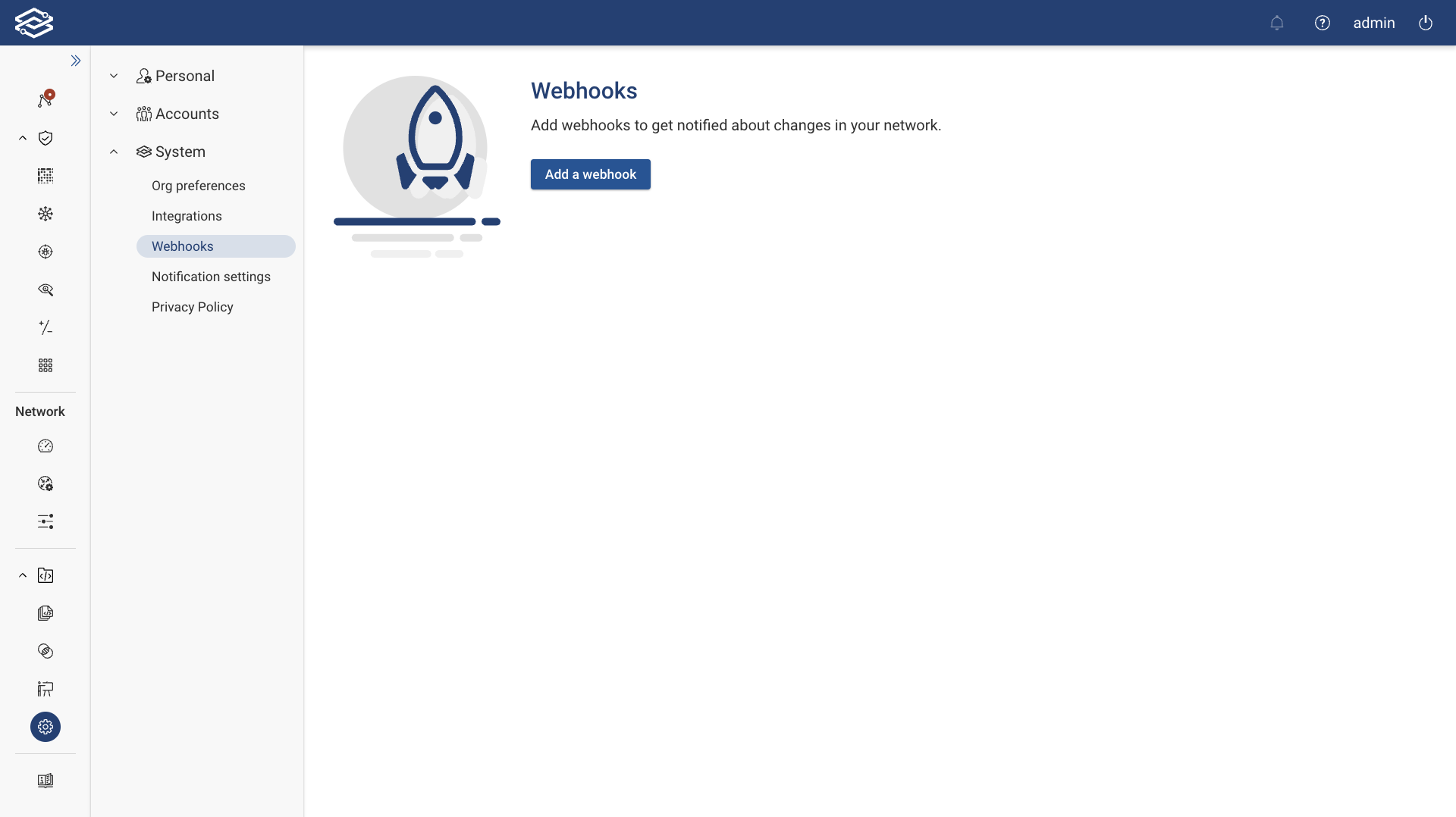
To configure the webhook, provide the following information in the Create webhook drawer.
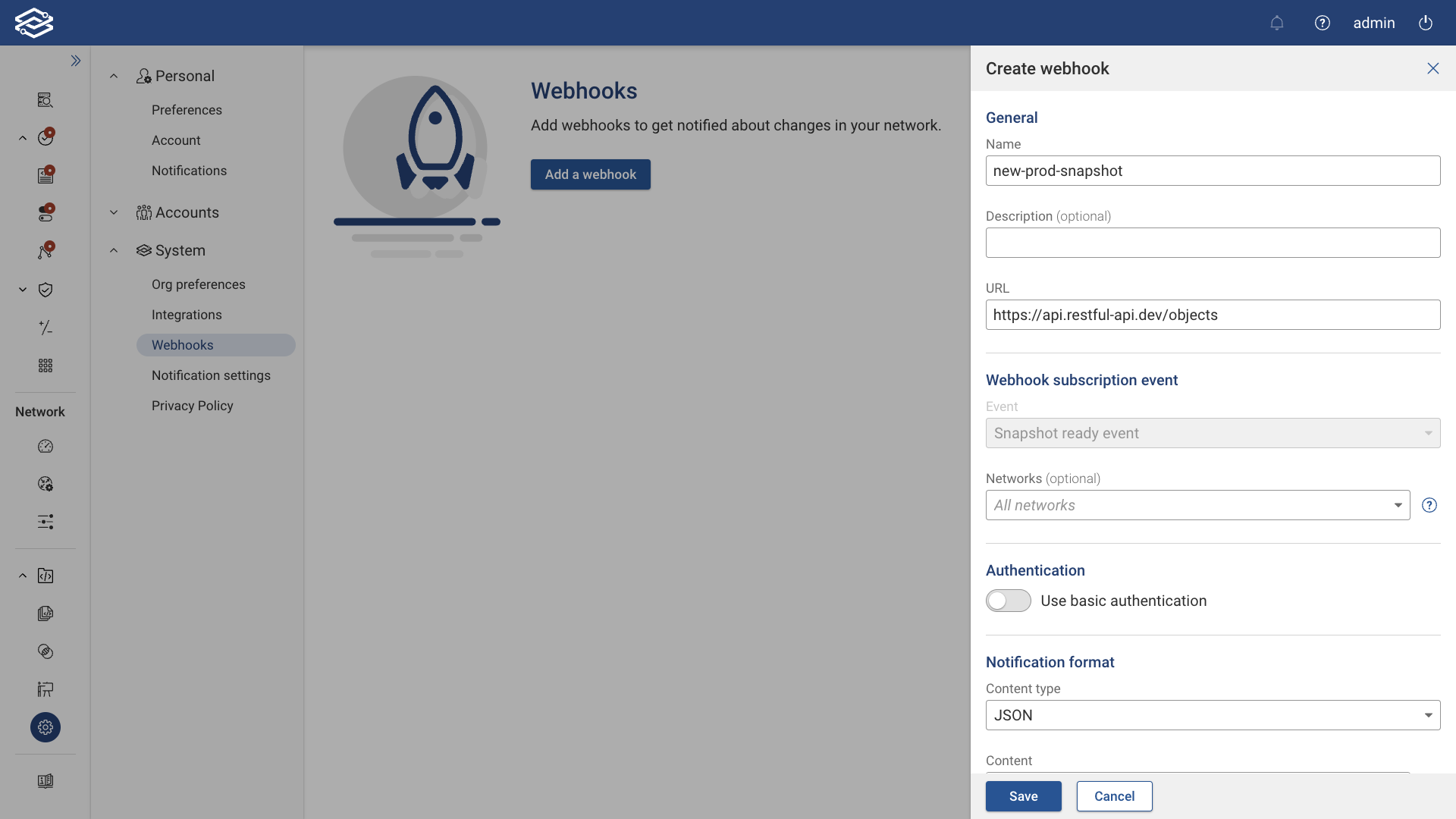
General
- Name: Provide a unique webhook name.
- Description (optional): Provide an optional description.
- URL: Add the external application URL.
- Disable SSL validation: Optionally disable SSL validation on on-prem deployments. Not recommended!
Webhook subscription event
- Snapshot Ready Event: Event notifications for all Networks will be sent by default.
- Networks (optional): Select a subset of Networks from the Networks drop-down menu. If left empty. events from all networks are sent.
Authentication
- Use basic authentication: To add webhook authentication, enable Use Basic Authentication and provide a Username and Password.
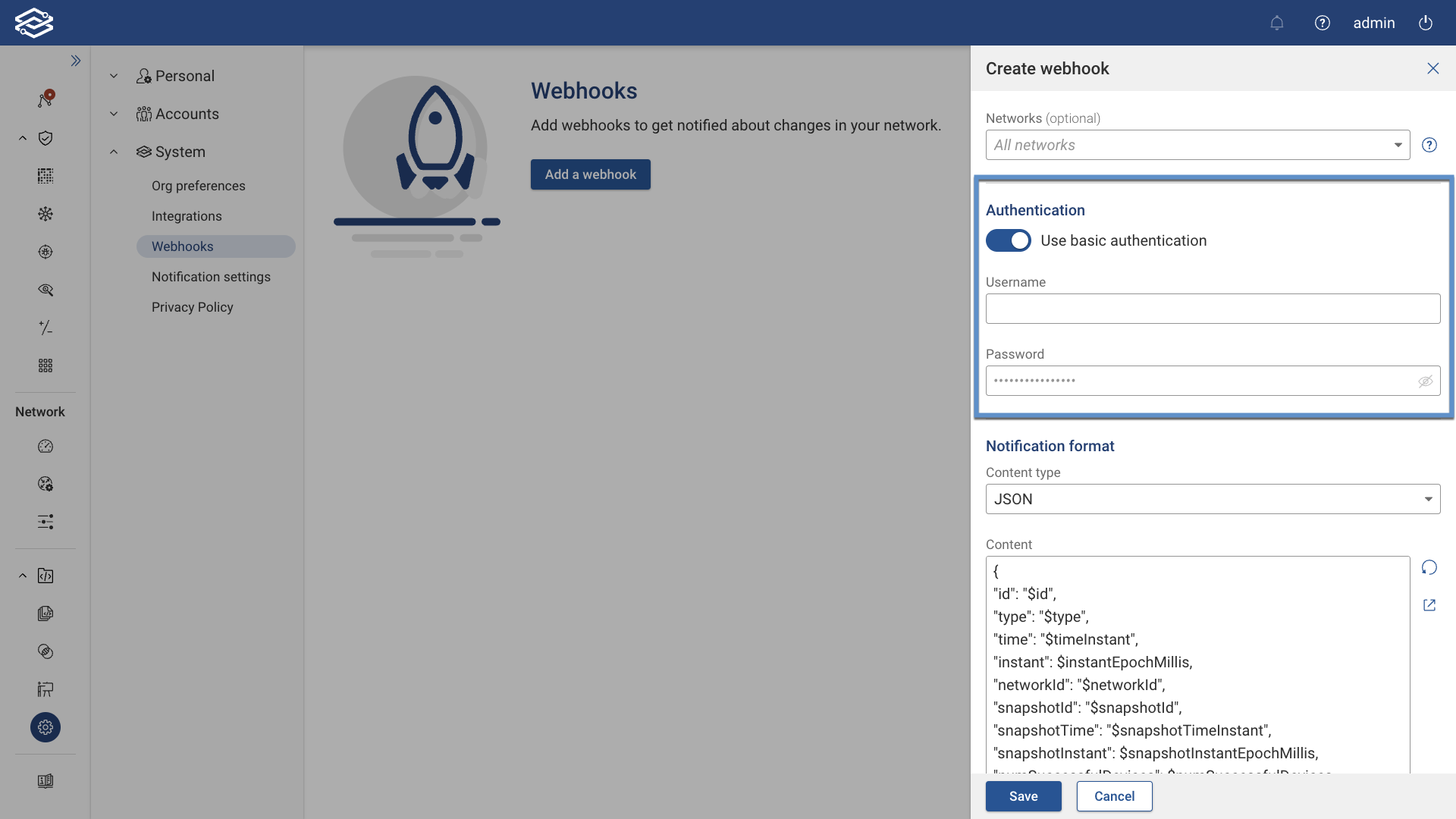
Notification format
- Content-type: Select JSON or Plain Text as the content type of the expected payload.
- Content: Displays an editable list of keys to match with the expected payload. A list of the supported variables can be found below.
- Reset to default: Resets the list of keys in the content textbox back to default.
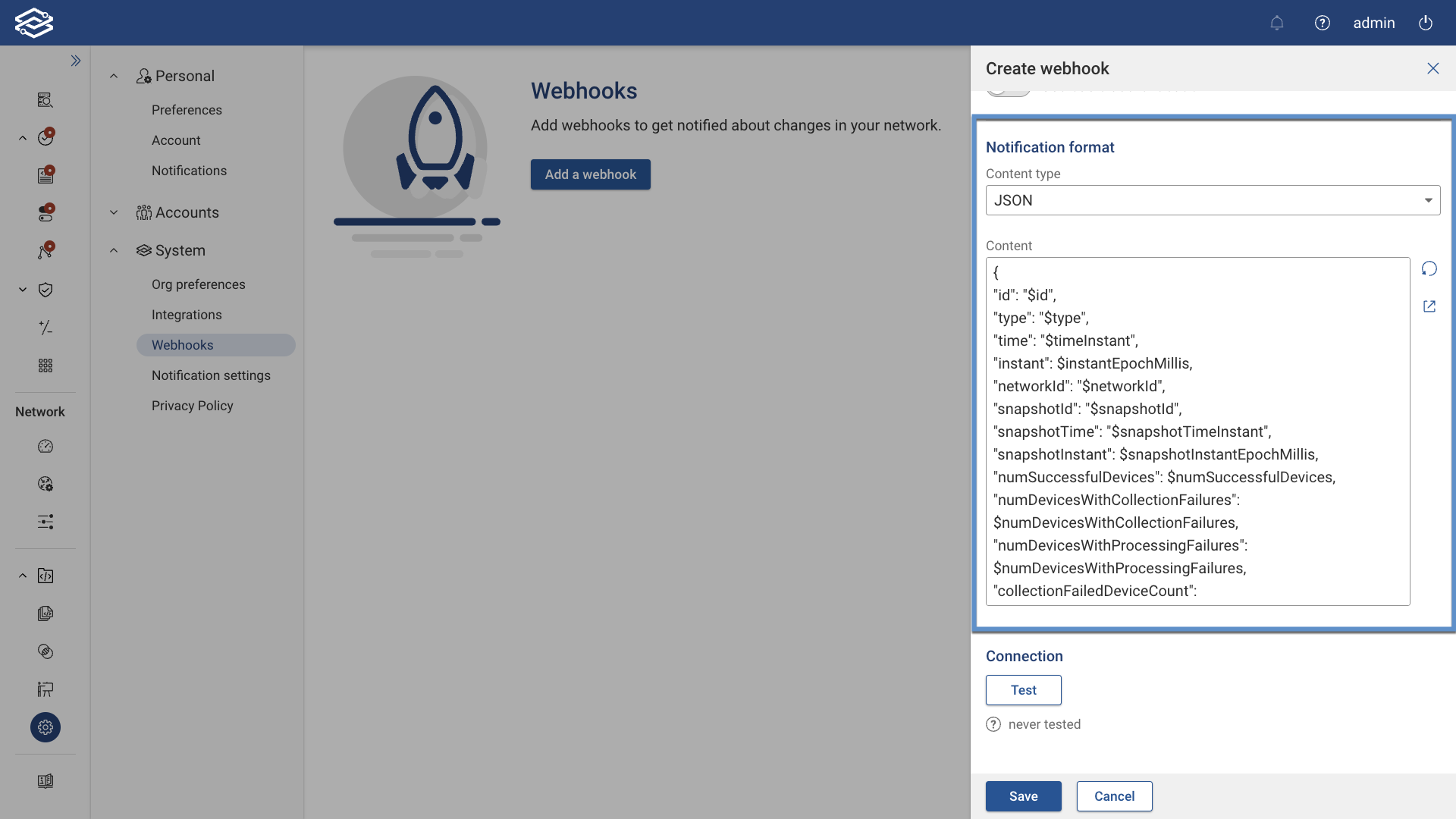
List of supported variables
$id
$type
$timeInstant
$instantEpochMillis
$networkId
$snapshotId
$snapshotTimeInstant
$snapshotInstantEpochMillis
$numSuccessfulDevices
$numDevicesWithCollectionFailures
$numDevicesWithProcessingFailures
$collectionFailedDeviceCount
$processingFailedDeviceCount
Connection
Test the connection with the external application and Save the webhook if it is successful without errors.
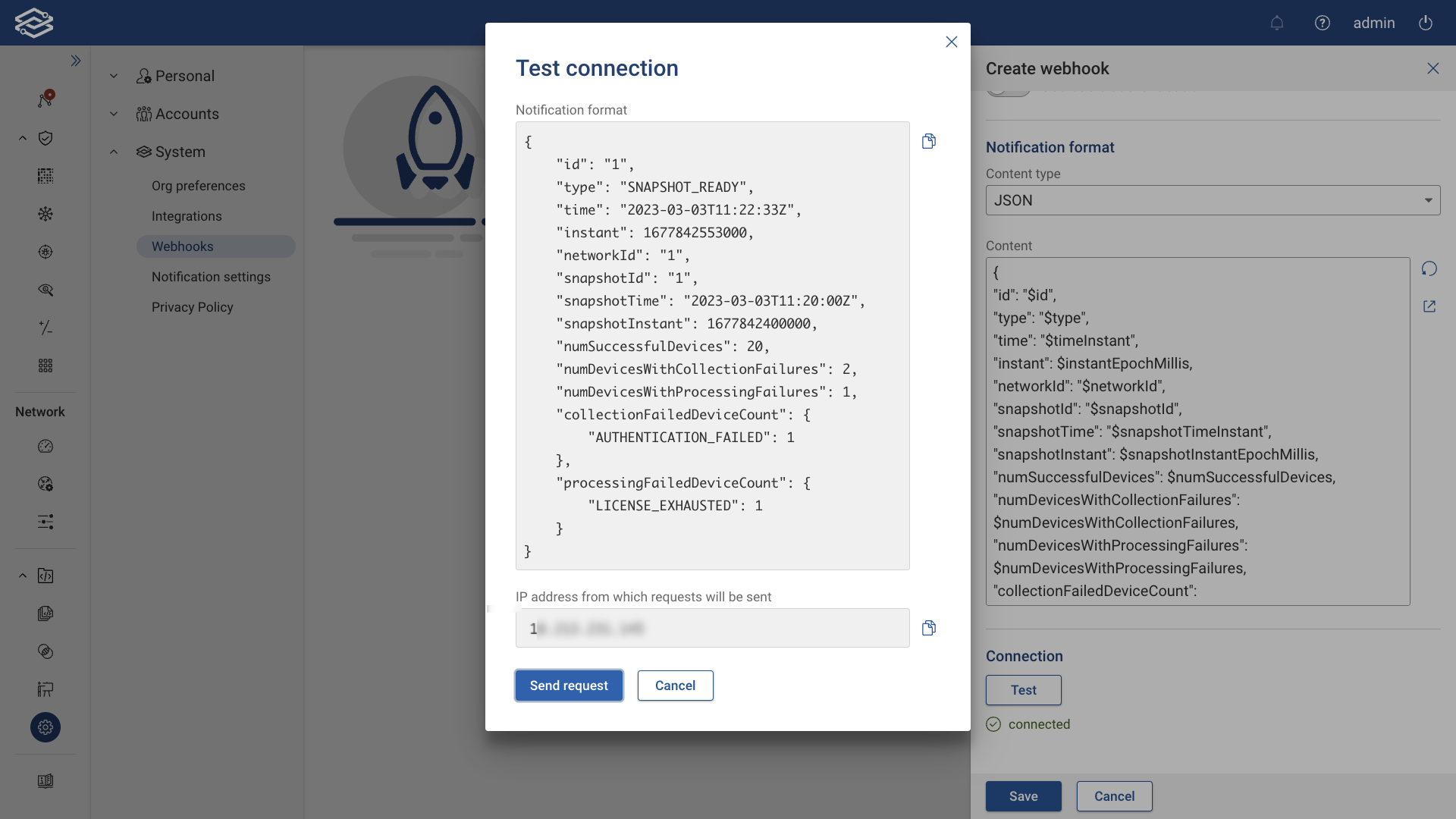
Customers may need to adjust firewall rules to allow Webhook requests from Forward to reach external applications.
The Webhook requests are sourced from the Forward application, https://fwd.app/ for SaaS deployment, or
https://<Forward-instance-IP>/ for on-prem deployments.
The Webhooks source IPs are listed at the bottom of the Test connection dialog.
Managing webhooks

Once a webhook has been added, it will be displayed within the Webhooks page with the available options:
- Active: Enable or disable a webhook by toggling it.
- Test: Clicking the test icon opens the test connection window. Payload information and the IP from which the request will be sent will be displayed. Click Send request to start the test.
- Edit: Clicking the edit icon opens the edit pane for the selected webhook.
- Delete: Select the delete icon to delete the selected webhook.